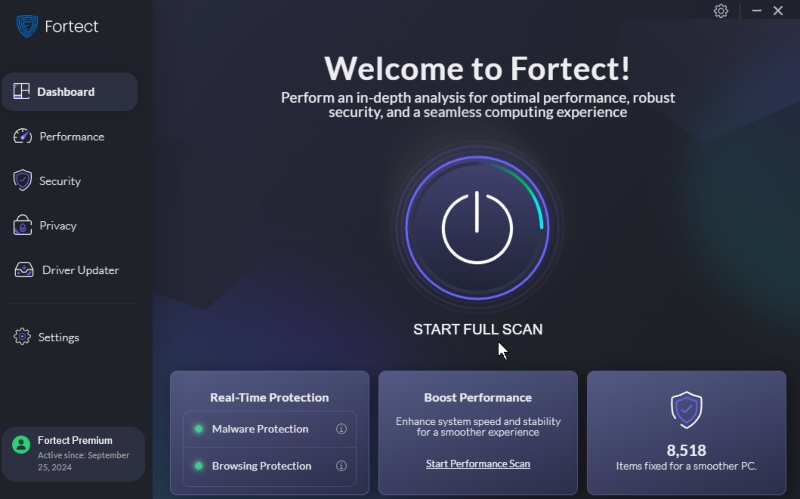BYOD Security Risks, Prevention, and Best Practices for Personal Devices
With the rise of remote work and the convenience of mobile technology, many people now use their devices, like Windows PCs and Android phones, for both work and play. This trend, known as Bring Your Device (BYOD), can make life easier but also comes with security risks that can put your personal and work data at risk.
This Fortect guide will explain the potential security threats of using your devices and offer practical tips for protecting your information.
What is BYOD?
BYOD stands for Bring Your Device. It’s a practice where you use your smartphone, tablet, or laptop for work-related activities, such as checking emails, accessing files, or joining virtual meetings. While using your device for work can be convenient, it’s also essential to understand how to keep your information safe and secure.
BYOD Security Risks

Using your device for work can introduce several security risks, including:
- Data Leakage: Your devices may not have the same security protections as work-issued devices, making it easier for sensitive information to be accidentally shared or exposed.
- Malware and Viruses: If your device does not have robust antivirus software, it could be vulnerable to malware and viruses that can steal or damage your information.
- Lost or Stolen Devices: If you lose your phone or laptop, someone can access your personal and work data if adequately secured.
- Unsecured Networks: Connecting to public Wi-Fi networks without proper security can expose your data to hackers and cybercriminals.
- Limited Control Over Device Security: Unlike work devices managed by IT teams, you are responsible for maintaining the security of your own devices, which can be challenging.
BYOD Security Prevention
To keep your personal and work data safe, consider the following security measures for your Windows PC and Android phone:
Application Control
To reduce the risk of malware, only download apps from trusted sources like the Google Play Store or Microsoft Store and avoid installing apps from unknown sources.
Data Encryption
Enable encryption on your Windows PC and Android phone to protect sensitive information. Encryption helps keep your data safe, even if your device is lost or stolen.
BYOD Security 8 Best Practices
Here are some best practices to help you secure your devices:
Regular Device Check-Ups
Check your devices regularly for software updates or security patches. Installing these updates promptly is essential for defending against new security vulnerabilities and threats.
Keep Security Software Up-to-Date

Constantly update your antivirus and security software to the latest version. This protects your devices against new viruses, malware, and other emerging cyber threats.
To check: Start > Type Settings > Windows Security
Adopt a Zero Trust Mindset
Use a zero-trust approach by never assuming any device or network is secure. Always verify the security of the networks and devices you connect to, even at home.
Strong Authentication Measures
Use strong passwords and enable two-factor authentication (2FA) for an added layer of security. This makes it harder for hackers to access your accounts.
Software Security for Your Devices
Install a reputable antivirus program on your Windows PC and Android phone, and update it regularly. Running frequent scans can help detect and remove any malware or viruses, safeguarding your personal information from potential security threats.
While Windows PCs have built-in antivirus software, a third-party solution like Fortect can offer more comprehensive protection against advanced threats. Fortect’s premium antivirus provides automatic scanning, real-time alerts, and effective threat mitigation for Windows PCs and Android devices, ensuring your devices stay secure.

Download and install Fortect now.
Education
Stay informed about the latest security threats and learn how to protect your devices. Knowing phishing scams and other cyber threats can help you avoid them.
Ensure Secure Network Connectivity
- Windows: Use a trusted VPN (Virtual Private Network) when connecting to public Wi-Fi or other untrusted networks. This will encrypt your internet connection and protect your data from prying eyes.
- Wi-Fi: Avoid using unknown or unsecured Wi-Fi networks, especially when performing sensitive activities like online banking or entering personal information. If you need to use public Wi-Fi, connect through a Virtual Private Network (VPN) to secure your data and protect your privacy.
Be Ready for Lost or Stolen Devices

Losing a device can be stressful, but being prepared can help protect your data:
- Enable Remote Tracking: Activate “Find My Device” on Android and Windows devices to locate them if they go missing.
- Set Up Remote Wiping: Ensure you can remotely erase your device to protect your personal information if it’s stolen.
- Use Strong Screen Locks: To secure your device, use a strong password, PIN, or biometric lock.
- Back-Up Your Data Regularly: Make regular backups of your important files to the cloud or an external drive
These steps will help you protect your sensitive data and minimize the impact if your device is lost or stolen.
Conclusion
Using your devices for work and everyday tasks can be convenient, but protecting your data is essential. By understanding the risks and following these security best practices, you can keep your Windows PC and Android phone safe from threats.
With the proper precautions, you can enjoy the benefits of BYOD without compromising your security.




